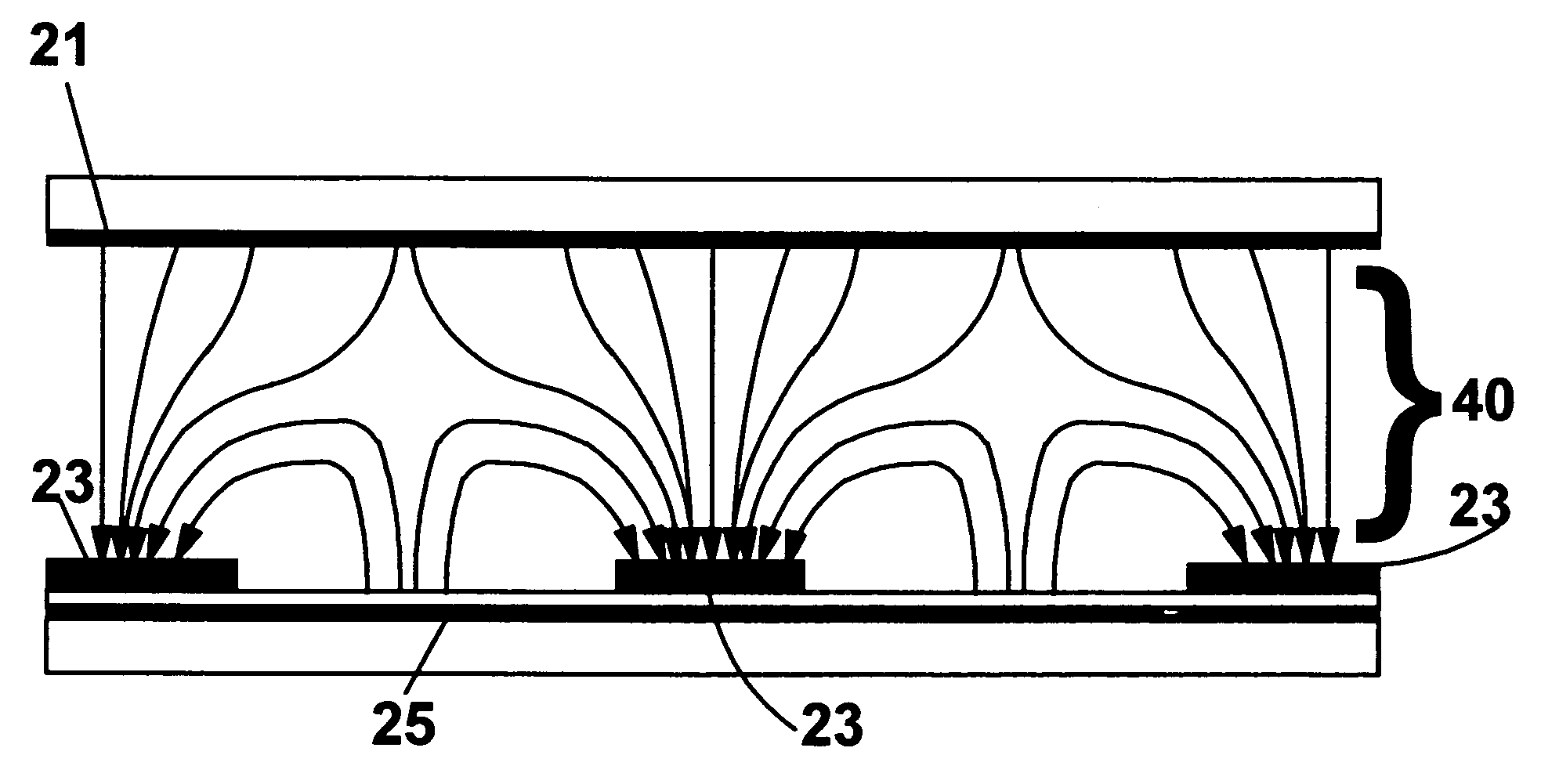High speed and wide viewing angle liquid crystal displays
- Summary
- Abstract
- Description
- Claims
- Application Information
AI Technical Summary
Benefits of technology
Problems solved by technology
Method used
Image
Examples
example 1
Lower Voltage for One Common Electrode
[0034] The voltage for common electrode 21 in FIG. 2 is 5V; this voltage can be made lower in order to reduce the vertical electric field strength and hence strengthen the lateral field. This can help improve the light efficiency since the lateral field becomes stronger and more molecules are switched to the bright state. This will however increase the corresponding response time for the bright-to-dark state due to the formation of a weaker vertical field. The remaining voltage readings are for common electrode 23 on bottom substrate 24, V=0V; for pixel electrode 25 V=0 to 5V. Common electrode 23 is electrically insulated from the pixel electrode 25 by a passivation layer 26.
example 2
Higher Voltage to Bottom Electrode
[0035] In FIG. 2, common electrode 21 has higher voltage; whereas, common electrode 23 has lower voltage and in principle these two electrodes can be interchanged. This interchange is shown in FIG. 5. In FIG. 5, the first common electrode 51 on top substrate 52 has a lower voltage (0V); whereas the second common electrode layer 53 in the bottom substrate 54 has a higher voltage (5V). This alternative design may lead to a less uniform vertical field because of the slightly higher potential difference that is caused by the passivation layer 56. In FIG. 5, a high electric field is emitted from pixel electrode 55 and hence a higher electric field is established across the passivation layer 56 than when the electric field is emitted from the top electrode 51. It should be noted, that the terminology “passivation layer” in the description of the present invention, is commonly known as an insulation layer. However, the potential difference that is establi...
example 3
Common Electrode and Pixel Electrode Interchanged
[0036] A first common electrode layer 60 with 5V is in top substrate 61 as shown in FIG. 6. The bottom substrate 63 supports a pixel electrode layer 62 with 0 to 5V and a second common electrode layer 64 with 0V. The pixel electrode layer 62 is electrically insulated from the common electrode 64 by a passivation layer 65. The positions of common electrode 64 and the pixel electrode 62 in this configuration are interchanged compared with the configuration shown in FIG. 2. The choice of the configuration depends on the fabrication process capability and the optimized electrode width and gap.
PUM
 Login to View More
Login to View More Abstract
Description
Claims
Application Information
 Login to View More
Login to View More - R&D
- Intellectual Property
- Life Sciences
- Materials
- Tech Scout
- Unparalleled Data Quality
- Higher Quality Content
- 60% Fewer Hallucinations
Browse by: Latest US Patents, China's latest patents, Technical Efficacy Thesaurus, Application Domain, Technology Topic, Popular Technical Reports.
© 2025 PatSnap. All rights reserved.Legal|Privacy policy|Modern Slavery Act Transparency Statement|Sitemap|About US| Contact US: help@patsnap.com



